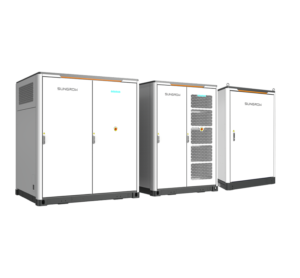In the dynamically evolving landscape of renewable energy, Sungrow has emerged as a beacon of innovation and environmental stewardship, particularly in the realm of solar battery storage systems. This blog post delves into how Sungrow integrates ecological considerations throughout its project lifecycle, underscoring its dedication to sustainable development and biodiversity protection.

Pioneering Sustainable Practices in Energy Development
Sungrow’s business model goes beyond mere energy production; it encapsulates a profound respect for nature and a commitment to ecologically responsible practices. Here’s how Sungrow is setting new standards in the solar industry:
Proactive Ecological Assessments
Before any project site selection, Sungrow ensures that a comprehensive biodiversity and bird migration assessment is conducted by a certified third-party agency. This is not just a formality but a crucial step to guarantee that the chosen site does not interfere with natural habitats or migration paths. The issuance of a detailed report following this assessment is pivotal in proceeding with project development only if it aligns with ecological preservation goals.
The Updated Photovoltaic and Wind Power Development Manual
In 2023, Sungrow demonstrated its ongoing commitment to sustainability by releasing an updated version of its Photovoltaic and Wind Power Development Manual. This document is key to understanding Sungrow’s approach as it:
– Clarifies Compliance Standards: It sets clear guidelines for project compliance, ensuring that all new developments meet stringent environmental standards.
– Acknowledges Prohibitive and Restrictive Factors: By considering environmental restrictions early in the planning stage, Sungrow proactively avoids areas that could lead to significant ecological disruption.
Addressing Ecological Challenges
Sungrow’s commitment extends into the active management of potential ecological impacts during the construction and operational phases of project development:
– Soil Erosion, Sewage, and Fire: Targeted measures are in place to mitigate common environmental issues that could arise during the construction process. These include strategies to prevent soil erosion, manage sewage effectively, and prevent fires, all of which could have detrimental effects on local ecosystems.
– Environmental Factor Control Ledger: Throughout the construction process, Sungrow maintains a detailed ledger of environmental factors, which helps in monitoring and managing the environmental impact efficiently.
– Inspections and Acceptance of Green Construction: Sungrow organizes regular inspections and ensures the acceptance of green construction practices, maintaining sustainability not just in design but also in execution.
Why Sungrow’s Approach Matters
Sungrow’s holistic approach to integrating biodiversity protection and ecological considerations into its solar battery storage systems serves multiple purposes:
– Risk Mitigation: By adhering to strict environmental guidelines, Sungrow minimizes the risk of regulatory penalties and fosters project longevity.
– Brand Integrity and Trust: Sustainability is increasingly becoming a criterion for partnership and investment. Sungrow’s commitment positions it as a leader in responsible energy solutions, enhancing stakeholder trust.
– Contribution to Global Conservation Efforts: By protecting biodiversity and ensuring sustainable practices, Sungrow contributes to global conservation efforts, aligning with international environmental goals.
Conclusion
Sungrow’s business practices in the development of solar battery storage systems exemplify a model of sustainability that goes beyond energy efficiency. By proactively assessing and addressing ecological impacts, adhering to stringent environmental standards, and implementing targeted measures to mitigate potential damages, Sungroot sets a benchmark in the industry. This not only enhances their business resilience but also ensures that their growth is aligned with global sustainability targets, paving the way for a greener future.
















